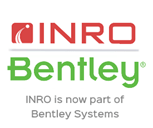The challenge of going fast: an insight into the complexities of designing Fast Rail in NSW
Mark Xerri, Julien Morizet, Laurane De Gendre & Preshen Pillay
WSP Australia
This presentation was delivered at the 2021 Online Conference Series and until October 2022 is only available to registered delegates and Content Access Pass holders via Interchange. For information on accessing this and other presentations please review the Content Access Pass options.
ABSTRACT
The Fast Rail program is in development across Australia, with the aim of speeding up rail services, improving regional connectivity and unlocking economies beyond established metropolitan centres. Fast Rail projects have been on the agenda for decades; if the vision is clear, the delivery is complex and far from a 'one-size-fits-all' approach.
This paper focuses on WSP's experience in delivering Fast Rail projects on several corridors in NSW. We will explore what makes each Fast Rail solution unique, and discuss the complexity, trade-offs and challenges from our recent experience in NSW, which other states such as Queensland may draw lessons from.
Although sharing some similarities to 'typical' strategic passenger rail planning studies, Fast Rail is fundamentally different. It flips the traditional concept of improving access to major capital cities by focusing on connectivity with regional areas led by an in-depth understanding of the community, business and regional needs. Each Fast Rail project has its own objectives, market, and unique technical constraints.
Fast Rail cannot operate successfully in a 'silo'. It needs to be integrated into a regional transport network. However, developing a suitable timetable becomes a challenge, because faster rail services may be in conflict with slower commuter passenger and freight services. Moreover, another key challenge is to find the right balance between running fast and including enough stops to maximise catchment and improve customer service.
Finally, Fast Rail aims to truly improve connectivity for regional areas; this means taking a door-to-door, multimodal approach to transport planning. In a hub and spoke network, Fast Rail services are able to provide high-speed and high-capacity transport linkages to hubs, but without integrating the service with other modes of transport such as buses, only part of the journey will be 'fast', with any travel time savings in the rail corridor lost in the first or last mile.
Author(s)
Mark Xerri | WSP
Mark is a chartered associate transport engineer and planner with wide-ranging experience on landmark rail and transport projects. He has broad experience in railway engineering and planning, from strategic transport feasibility studies to detailed design and operation of passenger, freight and light rail systems.
He has led and managed several major passenger, freight and light rail planning and corridor studies that have required a thorough understanding of the NSW transport network and land uses within Sydney. He is proactive in engaging with clients and stakeholders to deliver ‘best-for-project’ solutions with a long history of positive client feedback.
Recently, Mark has successfully led the Sydney to Newcastle, Sydney to Bomaderry and Sydney to Central West Fast Rail Feasibility Studies.
Laurane De Gendre | WSP
Laurane is an associate transport planner with a background in urban engineering. She is specialises in the technical delivery of major transport infrastructure projects such as Sydney Metro and NSW Fast Rail. Prior to Australia, Laurane was in France where she developed strong technical skills in multimodal public transport network design and optimisation, especially through projects overseas (Kazakhstan, Azerbaijan).
In 2019, Laurane led the transport advisory workstream for the Fast Rail program Sydney to Newcastle and Newcastle to Port Macquarie
In 2020, she led and coordinated the multidisciplinary WSP design team to deliver the feasibility design study supporting the strategic business case for Fast Rail Sydney to Central West. Key technical disciplines included: track design, rail planning and operation modelling, tunnelling and ventilation, structures, and environment and planning pathways.
Since 2019, Laurane is also involved in the transition to Zero-Emission bus fleets, Leading WSP’s national capability.
Julien Morizet | WSP
Julien is a rail transport engineer with 19 years of international experience in passenger and freight rail transport, with public and private railway companies, and engineering consultancies. His experience covers the whole cycle of rail operations from long-term strategic planning to day-to-day operations. After having lived and worked in various roles in the rail industry in France, The Netherlands and Switzerland, Julien relocated to Australia in October 2018 to join WSP as a principal rail operations and planning consultant. He is currently based in Brisbane but works on rail projects throughout Australia and New Zealand.
Recently, Julien performed a detailed analysis of the capacity and performance of the Sydney to Bomaderry, Parkes and Dubbo rail corridors as a starting point to assess options for Faster Rail services.
Preshen Pillay | WSP
Preshen is a rail project and design manager with 10 years’ of experience. He has delivered a range of rail and civil projects from reference to detailed design in Australia and New Zealand. He has recently delivered the Fast Rail – Sydney to Bomaderry Feasibility Study as the Corridor Design Lead, working closely with the client to identify the drivers and need for the infrastructure, and leading a multidisciplinary team to produce a balanced solution. Preshen has a unique experience delivering projects in Australia, where a more mature rail market exists, and in New Zealand where the market has recently starting to mature in leaps. Working in a maturing market has taught Preshen to work with clients to identify underlying drivers for projects and develop pragmatic solutions. This served him well on Fast Rail where a solution tailored to unique project needs are required.










